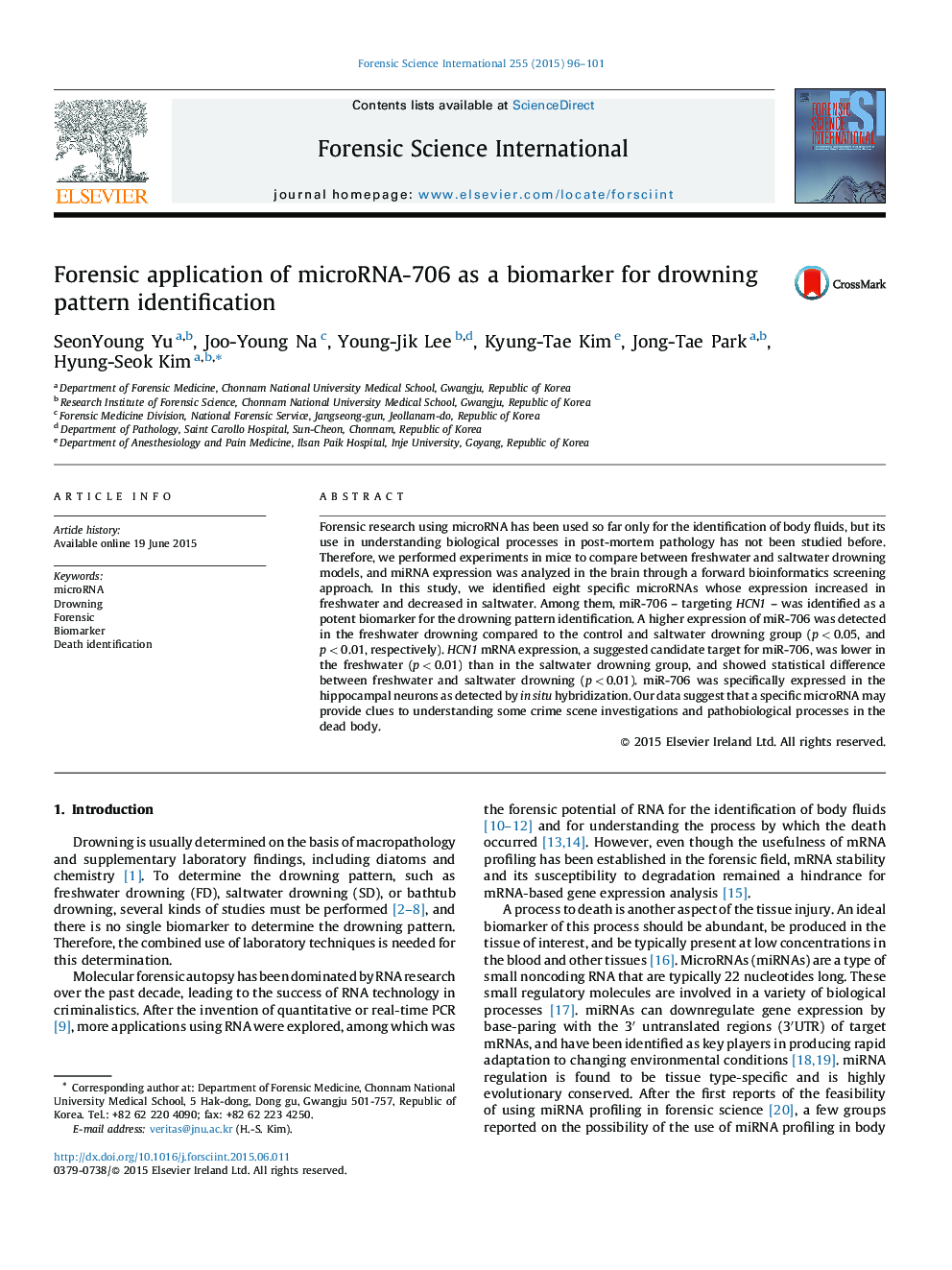| کد مقاله | کد نشریه | سال انتشار | مقاله انگلیسی | نسخه تمام متن |
|---|---|---|---|---|
| 95315 | 160425 | 2015 | 6 صفحه PDF | دانلود رایگان |
• Forensic application of microRNA to identify the manner of death is available.
• microRNA-706 is differentially expressed between freshwater and saltwater drowning brain.
• microRNA-706 is specifically expressed in hippocampal neurons.
• HCN1 gene is targeted by microRNA-706 and differentially expressed between freshwater and saltwater drowning brain.
Forensic research using microRNA has been used so far only for the identification of body fluids, but its use in understanding biological processes in post-mortem pathology has not been studied before. Therefore, we performed experiments in mice to compare between freshwater and saltwater drowning models, and miRNA expression was analyzed in the brain through a forward bioinformatics screening approach. In this study, we identified eight specific microRNAs whose expression increased in freshwater and decreased in saltwater. Among them, miR-706 – targeting HCN1 – was identified as a potent biomarker for the drowning pattern identification. A higher expression of miR-706 was detected in the freshwater drowning compared to the control and saltwater drowning group (p < 0.05, and p < 0.01, respectively). HCN1 mRNA expression, a suggested candidate target for miR-706, was lower in the freshwater (p < 0.01) than in the saltwater drowning group, and showed statistical difference between freshwater and saltwater drowning (p < 0.01). miR-706 was specifically expressed in the hippocampal neurons as detected by in situ hybridization. Our data suggest that a specific microRNA may provide clues to understanding some crime scene investigations and pathobiological processes in the dead body.
Journal: Forensic Science International - Volume 255, October 2015, Pages 96–101
